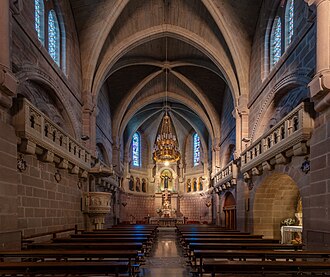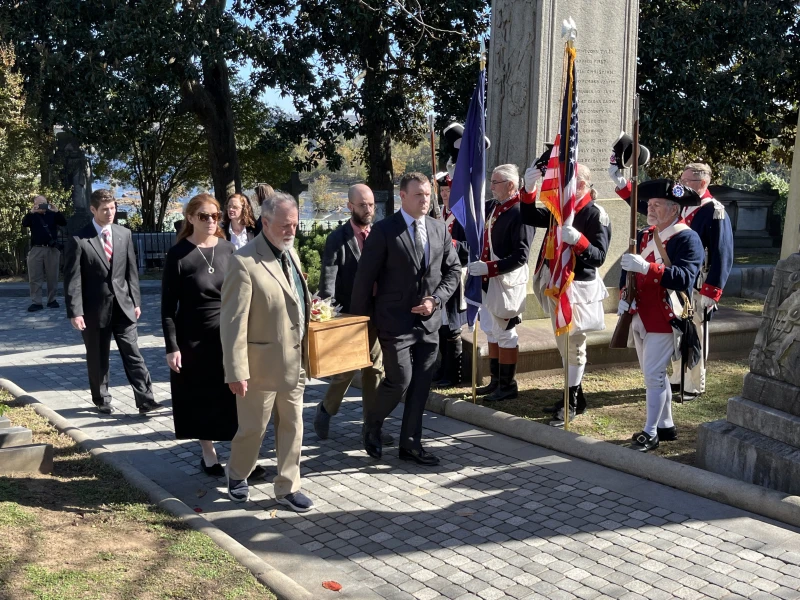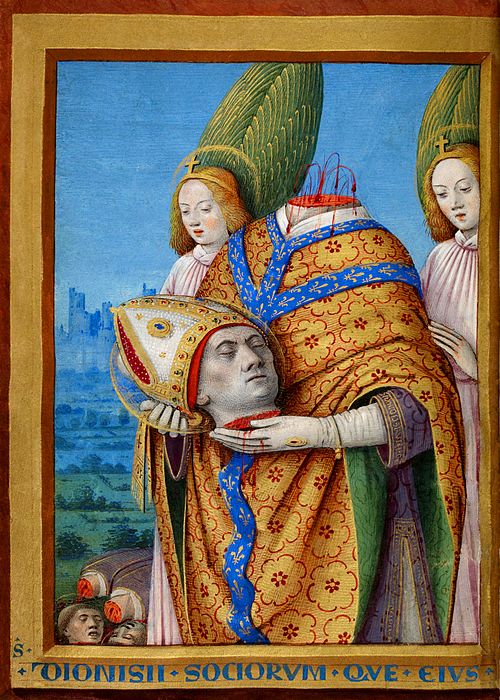




Washington, D.C. Newsroom, Nov 4, 2025 / 17:47 pm (CNA).
U.S. bishops and other Catholic leaders are offering “prayers of support and solidarity” for world leaders who will discuss climate change and other environmental matters at an upcoming conference.
The 30th annual United Nations Climate Change Conference (COP30) is scheduled for Nov. 10–21 in Belém, Brazil. World leaders, scientists, and representatives from civil society will discuss ways to implement solutions to combat climate change and form new national action plans.
Archbishop Borys Gudziak, chair of the United States Conference of Catholic Bishops’ (USCCB) Committee on Domestic Justice and Human Development; Bishop A. Elias Zaidan, chair of the Committee on International Justice and Peace; and Sean Callahan, CEO of Catholic Relief Services (CRS), are calling for “urgent, courageous action to protect God’s creation and people.”
“This year’s COP30 convenes while the Catholic Church celebrates the Jubilee Year of Hope,” the leaders said in a Nov. 4 statement. It is “a sacred opportunity to restore relationships and renew creation at a time when the gift of life is under grave threat.”
“Pope Leo XIV called for the participants of COP30 to ‘listen to the cry of the Earth and the cry of the poor, families, Indigenous peoples, involuntary migrants and believers throughout the world,’” the leaders said.
“Climate change, biodiversity loss, and environmental degradation are devastating communities already burdened by poverty and exclusion. Farming and fishing families confront threats to their livelihoods; Indigenous peoples face destruction of their ancestral lands; children’s health, safety, and futures are at risk,” the statement said.
“A decade ago, in Laudato Si’, Pope Francis reminded us that the climate is a common good, belonging to all and meant for all, and that intergenerational solidarity is not optional,” the statement said. “Failing to steward God’s creation ignores our responsibility as one human family.”
The leaders are calling on world leaders to act “urgently” to implement the Paris Agreement, a 2015 international treaty to limit global warming that “protects God’s creation and people.”
The leaders asked that countries and civil society organizations recommit to implementation that fosters economic opportunities, commits to efforts that reduce climate warming emissions, and pledges loss and damage financing that guarantees priority and direct access to vulnerable communities.
They also asked that they ensure a just transition to a sustainable economy centered on workers, communities, and creation and make financing for climate solutions timely and transparent while also upholding human dignity.
“As all of us are impacted, so must we all be responsible for addressing this global challenge,” the leaders said. “Together, these actions can work towards integral ecology and ‘give priority to the poor and marginalized in the process.’”
Read More

Richmond, Virginia, Oct 23, 2025 / 17:04 pm (CNA).
Nearly two centuries after her death, the daughter of American Founding Father James Monroe has been laid to rest in Richmond, Virginia, joining her family’s historic burial plot in the city’s famed Hollywood Cemetery.
The Diocese of Richmond held Eliza Monroe Hay’s reinterment at the top of Hollywood Cemetery overlooking the James River on Oct. 23. Hay, who died in 1840, converted to Catholicism several years before her death.

State Sen. Bryce Reeves, who worked with the Eliza Project to repatriate Hay’s remains, said she was “far more than the daughter of a president.”
He described Hay as strong-willed and intelligent. “She served this nation quietly but powerfully in its formative years,” he said.
The historic reinterment came about from a yearslong effort by the Eliza Project to bring Hay’s mortal remains home from the Cimetière du Père-Lachaise, a cemetery on the outskirts of Paris.

Born in Fredericksburg, Virginia, in 1786, Hay grew up in both the U.S. and Paris, where her father was the American ambassador amid the ongoing French Revolution.
She would later be known for serving as an unofficial First Lady of the White House during James Monroe’s presidency, as her mother Elizabeth’s health regularly kept her away from state functions.
Hay’s husband, Virginia attorney George Hay, died in 1830, as did her mother. James Monroe died in 1831 and was by then one of a dwindling number of prominent U.S. citizens who had led the country through its founding and earliest years.
Hay herself subsequently returned to Paris, where she converted to Catholicism before she died.

Delivering Hay’s eulogy at the event, Virginia resident Barbara VornDick described Hay as “my friend from the past.”
VornDick said in an Oct. 21 press release that the effort “has been a fascinating, enriching journey in many ways,” though she said the “most amazing aspect was how it enriched my faith.”
She told the Arlington Catholic Herald in August that she spent years researching Hay’s life. She discovered that a popular family legend that Hay became a nun was untrue, but her conversion to Catholicism was confirmed by records at St.-Philippe-du-Roule Church in Paris, where her funeral Mass was held in 1840.
Hay also reportedly received a piece of jewelry from the Vatican — a cameo of the head of Christ — along with a note from Pope Gregory XVI’s secretary of state.
During her years at the White House, Hay gained a reputation as an unpleasant, demanding hostess. Reeves said at the Oct. 23 ceremony that Hay was at one time described by John Quincy Adams as an “obstinate little firebrand.”
The Eliza Project, however, says she had a record of “good deeds and generosity” that history has largely forgotten.
“She gained increasing admiration for her nursing of the sick: for family, for friends, and, during two epidemics, for the people of Washington,” the project said.
She also exhibited “a sense of duty and loyalty, strength of character and fortitude, and compassion for the sick and suffering.”

The Diocese of Richmond had earlier held a memorial Mass for Hay at the nearby Cathedral of the Sacred Heart before the interment at Hollywood Cemetery. Father Tony Marques, the rector of the cathedral, presided over the Rite of Committal on Oct. 23. The cathedral’s choir performed at the ceremony.
Describing the yearslong project to repatriate Hay’s remains as a “grassroots effort,” Reeves told the assembled crowd on Tuesday: “The Virginian thing to do was bring Eliza home.”
VornDick told the Herald that the yearslong effort to “bring Eliza home” was motivated by the likelihood that she “never intended to die” in Paris.
“I just wanted to make it right for her,” she said.
At the reinterment, meanwhile, VornDick described Hay as a “daughter, sister, wife, and grandmother,” one who stands out in history for her devotion, service, and forceful personality.
“Today marks the end of the Bring Eliza Home Project,” she said. “But it is a happy ending.”
Read More


| Picture of the day |
|---|

|
|
Flowering trees at the bottom of the Eiffel Tower in Paris (France). Today is the March equinox, which marks the beginning of astronomical spring in the Northern Hemisphere.
|


| Picture of the day |
|---|

|
|
Grand staircase of the Palais Garnier, an opera house in Paris, France that opened on this day 150 years ago.
|

The legacy of the 1900 Paris Exposition lives on through several iconic structures that still adorn the Parisian skyline today: the Grand Palais, the Petit Palais, the Pont Alexandre III, the Gare d’Orsay railroad station (now the Musée d’Orsay), and two original entrances of Paris Métro stations designed by Hector Guimard.
Read More

